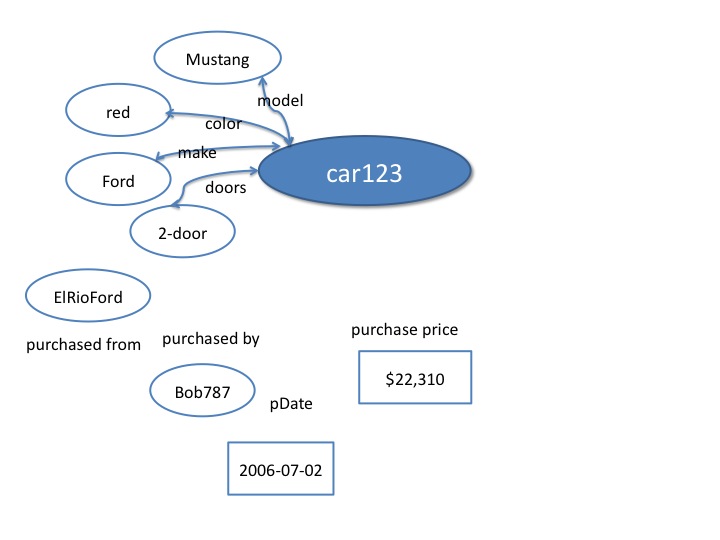Bob buys the car for $22,310 on July 2, 2006 from El Rio Ford.
Now we have added some new things to our graph:

It isn't clear, however, how these can be connected to the original car graph. The answer is that the event of the purchase can itself be a thing.

The event "thing" creates a graph of all of the information about the purchase. There could be other ways to do this: you could link the purchase price directly to the car, although we know that prices can be different in different purchase events. You could link the car dealership directly to the car, and treat the event as a transfer of ownership rather than a simple purchase. How you model your data will depend on what is meaningful within your application.
Note that we have chosen to use a standardized form of the date. The price should also have a standard currency form with the value and the currency (e.g. "USD"). Bob and the dealership will be considered "things" that have a URI. The purchase event must be a URI because it is the subject of other statements. It may be a URI that is never re-used, but we commonly assign identifiers to purchases for record-keeping, so this is really no different to current practice for many commercial activities.
In our next addition to the graph, Bob sells the car to Mary on February 3, 2011 for $7,250.
